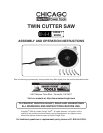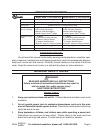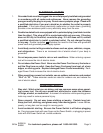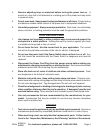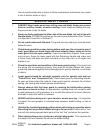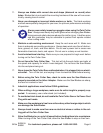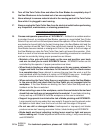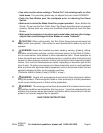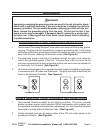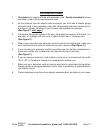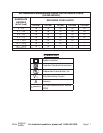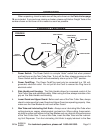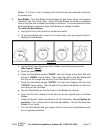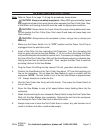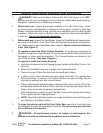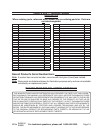
Page 5SKUs
94596 &
94896
For technical questions, please call 1-800-444-3353.
Use of unauthorized parts or failure to follow maintenance instructions may create
a risk of electric shock or injury.
SPECIFIC SAFETY RULES
DANGER! Keep hands away from cutting area and blade. Keep your second
hand on auxiliary handle, or motor housing. If both hands are holding the saw,
they cannot be cut by the blade.
Keep your body positioned to either side of the saw blade, but not in line with
the saw blade. KICKBACK could cause the saw to jump backwards. (See “Causes
and Operator Prevention of Kickback.”)
Do not reach underneath the work. The guard can not protect you from the blade
below the work.
Check lower guard for proper closing before each use. Do not operate saw if
lower guard does not move freely and close instantly. Never clamp or tie the
lower guard into the open position. If saw is accidentally dropped, lower guard
may be bent. Raise the lower guard with the Retracting Handle and make sure
it moves freely and does not touch the blade or any other part, in all angles and
depths of cut.
Check the operation and condition of the lower guard spring. If the guard and
the spring are not operating properly, they must be serviced before use. Lower
guard may operate sluggishly due to damaged parts, gummy deposits, or a buildup
of debris.
Lower guard should be retracted manually only for special cuts such as
“Pocket Cuts” and “Compound Cuts.” Raise lower guard by Retracting Handle.
As soon as blade enters the material, lower guard must be released. For all other
sawing, the lower guard should operate automatically.
Always observe that the lower guard is covering the blade before placing
saw down on bench or floor. An unprotected, coasting blade will cause the saw
to walk backwards, cutting whatever is in its path. Be aware of the time it takes for
the blade to stop after switch is released.
NEVER hold piece being cut in your hands or across your leg. It is important
to support the work properly to minimize body exposure, blade binding, or loss of
control.
Hold tool by insulated gripping surfaces when performing an operation where
the cutting tool may contact hidden wiring or its own cord. Contact with a “live”
wire will also make exposed metal parts of the tool “live” and shock the operator.
When ripping always use a rip fence or straight edge guide. This improves the
accuracy of cut and reduces the chance for blade binding.
1.
2.
3.
4.
5.
6.
7.
8.
9.
10.



